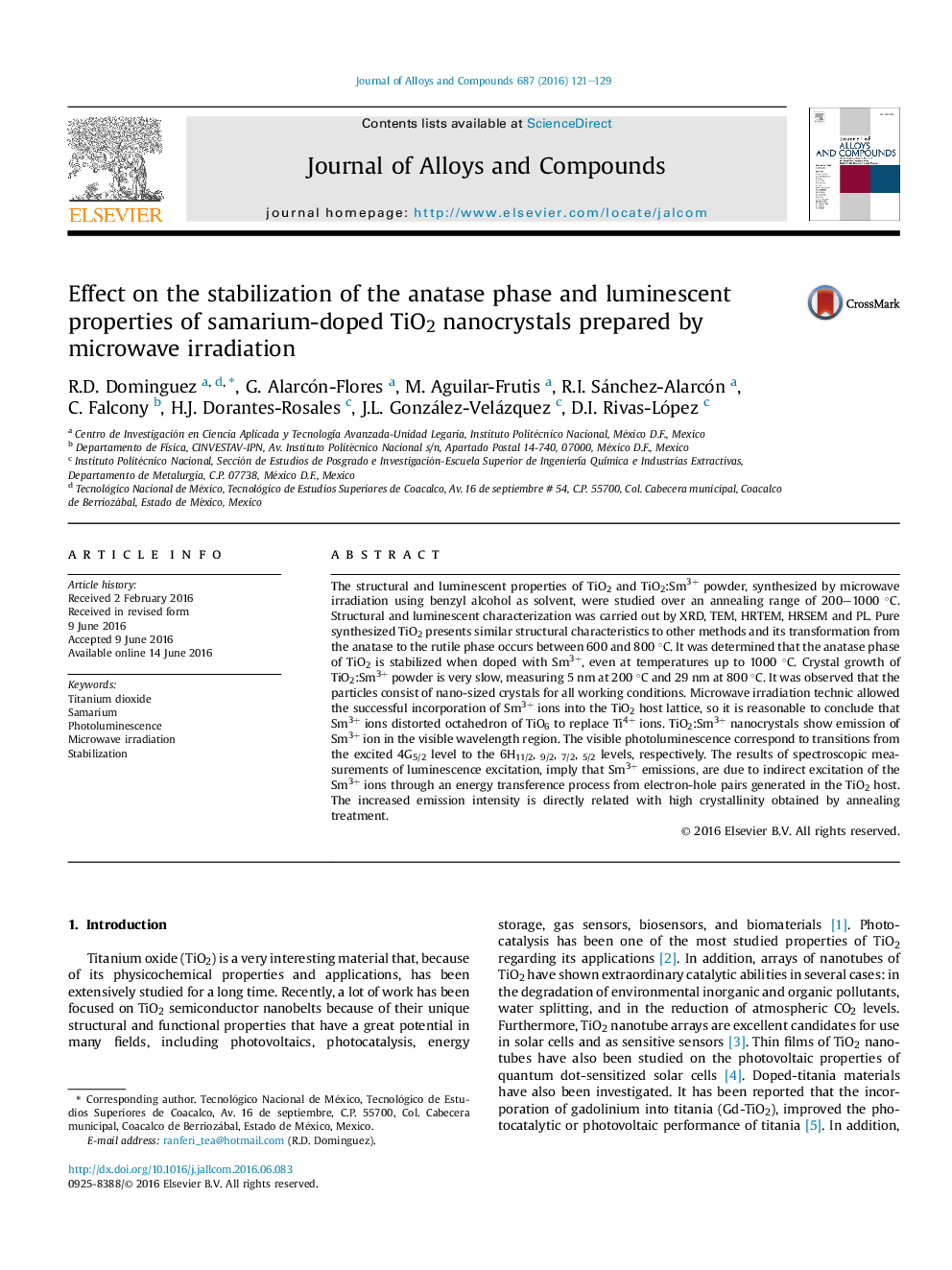| Article ID | Journal | Published Year | Pages | File Type |
|---|---|---|---|---|
| 7995678 | Journal of Alloys and Compounds | 2016 | 9 Pages |
Abstract
The structural and luminescent properties of TiO2 and TiO2:Sm3+ powder, synthesized by microwave irradiation using benzyl alcohol as solvent, were studied over an annealing range of 200-1000 °C. Structural and luminescent characterization was carried out by XRD, TEM, HRTEM, HRSEM and PL. Pure synthesized TiO2 presents similar structural characteristics to other methods and its transformation from the anatase to the rutile phase occurs between 600 and 800 °C. It was determined that the anatase phase of TiO2 is stabilized when doped with Sm3+, even at temperatures up to 1000 °C. Crystal growth of TiO2:Sm3+ powder is very slow, measuring 5 nm at 200 °C and 29 nm at 800 °C. It was observed that the particles consist of nano-sized crystals for all working conditions. Microwave irradiation technic allowed the successful incorporation of Sm3+ ions into the TiO2 host lattice, so it is reasonable to conclude that Sm3+ ions distorted octahedron of TiO6 to replace Ti4+ ions. TiO2:Sm3+ nanocrystals show emission of Sm3+ ion in the visible wavelength region. The visible photoluminescence correspond to transitions from the excited 4G5/2 level to the 6H11/2, 9/2, 7/2, 5/2 levels, respectively. The results of spectroscopic measurements of luminescence excitation, imply that Sm3+ emissions, are due to indirect excitation of the Sm3+ ions through an energy transference process from electron-hole pairs generated in the TiO2 host. The increased emission intensity is directly related with high crystallinity obtained by annealing treatment.
Related Topics
Physical Sciences and Engineering
Materials Science
Metals and Alloys
Authors
R.D. Dominguez, G. Alarcón-Flores, M. Aguilar-Frutis, R.I. Sánchez-Alarcón, C. Falcony, H.J. Dorantes-Rosales, J.L. González-Velázquez, D.I. Rivas-López,
